The process used to design, develop, test, and maintain the quality of a software product is known as the software development life cycle. SDLC is the acronym for Software Development Life Cycle, which is also called Software Development Process.
There are several approaches to it, and these are collectively known as SDLC methodologies. Organizations and developers use SDLC methodologies or models to produce high-quality software that meets customer expectations and provides fast delivery. SDLC is also used to flag errors early in the software creation process.
Before discussing the best SDLC methodologies, let us first know more about the concept.
What is SDLC? [Definition]
SDLC defines the different tasks to be performed in each step of the software development process. The life cycle defines the quality and efficiency of software to be developed in the process. The image below shows the various stages of SDLC:
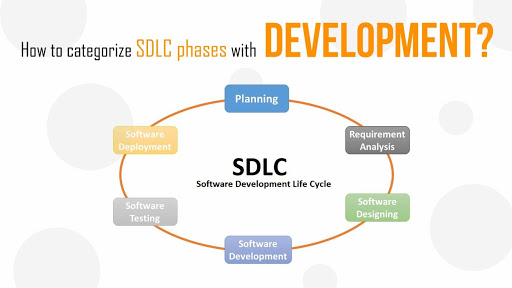
Stage 1: Planning
Planning is the basic stage, from which the process of software development starts. This stage involves the senior (managerial) members of the team. They accomplish it with inputs from the customer, and the sales department works on it by doing market surveys and discussions with the domain experts in the industry.
This information is then used to plan the basic approach of project development and the feasibility of the project according to economic, technical, and operational aspects. This planning stage defines the following:
- The way the project will be designed.
- Everything that will be required in the process of project development.
- The associated risk with the project.
Stage 2: Requirement Analysis
The customer will give all the requirements, i.e., what they want in the project and what will be the flow of the project. All requirements will be then defined and documented, and then this will be approved by the customer and the market analysts to make sure that the product to be developed fulfills its purpose.
Everything is documented in a document called SRS (Software Requirement Specification) . The SRS report consists of all the details required during the entire software development life cycle.
Stage 3: Software Designing
First, the best architecture for developing the software product is chosen with a step-by-step explanation of the entire process. During the preparation of the SRS report, more than one design approach is proposed. These are documented in the Design Document Specification (DDS).
DDS is sent to the stakeholders for reviewal. This is done on the basis of different parameters, including design modularity, risk assessment, budget and time constraints, and product robustness. The main idea is to select the best design approach for the project.
This stage also defines the project’s data flow representation with respect to architectural modules. DDS is the document upon which the upcoming stages of SDLC depend, so it should clearly and thoroughly define the architecture with even the minute details.
Stage 4: Software Development
This is the SDLC phase, where the actual development of the product starts. Programming starts here. The codes are generated as per the DDS. The code can be generated without any hassle if the DDS is prepared very carefully and all design specifications are in an organized manner.
The success of the process of software development depends on the developer (team). The developer must follow the coding guidelines and use best coding practices while using a range of programming tools, like interpreters, compilers, and debuggers. The programming language to be used must be decided as per the project requirements.
Stage 5: Software Testing
When the project is ready in terms of design and code, we need to test it. Usually, testing is part of all stages of the software development process in most modern SDLC methodologies. The developed software product is tested for defects (bugs). Upon detection, the defects are tracked and fixed. Next, testing is done again on the software product to ensure defect-free top quality.
Stage 6: Software Deployment
Once the product testing is complete, i.e., all the bugs are fixed, the product is greenlit for deployment in the appropriate environment(s). Sometimes product deployment is done as per the strategy of the organization.
The product is released in the selected segment to test its response in the real environment. This is known as UAT (User Acceptance Testing). If the result received is positive, then it is released in the whole segment, but if there are any enhancements suggested, the product will be released after applying the changes.
Top SDLC Methodologies
SDLC is the industry-standard approach to managing the phases of an engineering project. In the common methods, SDLC methodologies are used to trace a project from the planning phase to the final release, including operations and maintenance.
Here are the various SDLC methodologies:
1. Waterfall Model
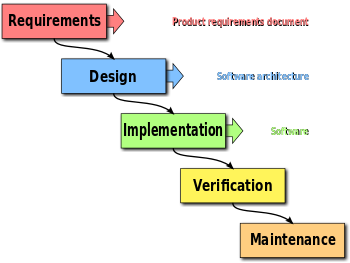
It is the oldest method among SDLC methodologies. A waterfall model is a straightforward approach and a structured model. But in recent years, the popularity of the waterfall model has declined. That's because this model has a rigid structure that strictly needs to be followed.
The steps involved in the waterfall model are given in the above picture. In the very initial stage, the requirements are defined. Only after that, the process starts. This is the major downside of this model. Each stage must be finished to proceed to the next stage.
This model is not useful if flexibility is required and the project is for the long term. But the waterfall is still a strong solution for government contractors.
Pros
Here are some benefits of waterfall methodology:
- The waterfall methodology is simple and easy to understand.
- Developers can identify design errors in the analysis and design stages. Thus, it helps them avoid writing faulty code during the implementation phase.
- Once the requirements are defined, it becomes easy to estimate the total cost and time required for the development of the software product.
- As the waterfall methodology requires detailed requirements documents, anyone joining in the middle of the development process can gain insights into the software product and pace with the development process easily.
- As there is no customer interaction in the waterfall methodology, there are no changes in the requirements.
Cons
Some major drawbacks of waterfall methodology are as follows:
- The waterfall model is not ideal for large and complex projects.
- Testing is carried out at the end of the software development life cycle. Therefore, there is a high amount of risk and uncertainty.
- There is no scope for the changing requirements since no customers are involved in this approach.
- The next phase begins only when the current phase gets completed. Therefore, it is a time-consuming methodology.
- You will get working software only at the end of the development life cycle.
2. Iterative Model
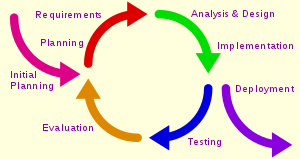
Another popular SDLC model is the iterative model. This model focuses on repetition. It does not start with the known requirements. Unlike the other SDLC methodologies, here, the development team initialize the software requirements and test and evaluate them to find further requirements. The design and implementation phase comes next.
Each step produces a new version of the software. Improvements are applied in each iteration until the complete product is ready. The main advantage of this model is that the customer gets the working version of the project in the early stages of the process.
The iterative model is the same as the agile model, except that the external involvements have less scope. A popular example of the iterative model is IBM’s Rational Unified Process (RUP).
Pros
Here are the notable benefits of the iterative model:
- End-users can get the working functionality of the software product at the early stages of development.
- It produces results quickly and periodically.
- Testing and debugging become easy in small iterations.
- You can change the requirements and not worry about the cost.
- In every iteration, the team identifies and resolves risks. Higher risks are managed first.
- The iterative model is ideal for large and mission-critical projects.
Cons
The following are the major limitations of the iterative model:
- The iterative model requires high management.
- System architecture or design issues may arise because all the requirements are not available at the onset of the development life cycle.
- The end project is not known.
- This model requires highly skilled and proficient resources for risk analysis.
3. Agile Model
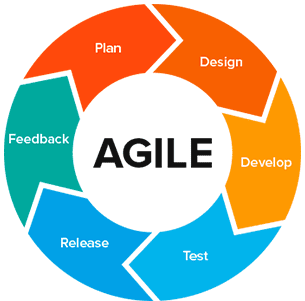
The agile methodology is the opposite of the waterfall model. The difference is that rather than focusing on requirement analysis, design, and testing individually, the agile model unifies them all in an ongoing process that is done by the involvement of management, developers, and customers.
Initially, the work is broken into segments called “sprints,” and the responsible team tackles the needs of the particular segment with their customers and performs testing. Agile works well where speed and flexibility are of the utmost importance. Typical examples of such projects are found in small organizations and startups.
Pros
The following are the pros of the agile methodology:
- The agile methodology is more flexible since it adapts to changes more rapidly and quickly than other software development methodologies.
- In the agile methodology, the software product is released to customers after every sprint cycle. Therefore, customer satisfaction is high.
- Customers can provide their feedback on each deliverable of the software product. As a result, the software product meets all the customers’ requirements.
- The development and testing teams, project managers, and stakeholders collaborate frequently in the agile methodology. Therefore, there is constant collaboration throughout the development life cycle.
- Customers can add changes to the requirements at the later stages of development.
Cons
Some of the major cons of the agile methodology are listed below:
- The agile methodology does not have detailed documentation.
- Since all requirements of the software product are not defined at the onset of the development process, it is challenging to predict the final result.
- Also, it is challenging to estimate the total time, cost, and resources required.
4. Lean Model
Lean is closely interconnected with agile as they both focus on speed and flexibility for continuous improvement. Teams are also focused on cutting waste and finding opportunities at every turn throughout the SDLC process by dropping unnecessary meetings to reduce the time required for documentation.
The lean methodology is inspired by lean manufacturing practices and principles, which are:
- Eliminate waste
- Amplify learning
- Decide as late as possible
- Deliver as fast as possible
- Empower the team
- Build integrity in
- See the whole
The major difference between agile and lean is with respect to customer satisfaction. Agile gives top priority to stakeholder feedback, while lean emphasizes the elimination of waste to create more value for a customer rather than enhancing satisfaction.
Pros
Here are the remarkable benefits of the lean model:
- The lean model simplifies the development process by removing unnecessary process stages in designing software.
- Since this model focuses on Minimum Viable Product (MVP), it prioritizes essential functions and enables developers to spend less time on valueless builds.
- It ensures the involvement of more members, due to which the overall workflow becomes optimized.
Cons
Some major drawbacks of the lean model are as follows:
- The V-model entirely depends on the team member involved. Therefore, this model is not as scalable as others.
- The success of the project depends on the technical skill of team members and how well they are disciplined.
- In the V-model, the Software Requirements Specification (SRS) evolves constantly, and hence the development team will not have the insights into original objectives.
5. Prototyping Model
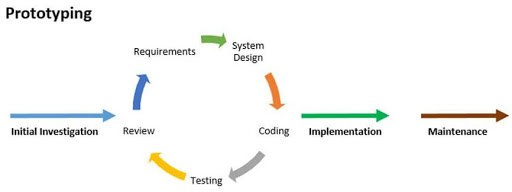
As the name specifies, in this model, the team focuses on producing an early model of the product, system, software , or application. This is not completely fully functional or tested, but it’s only to give the customer an idea about what’s to come. According to the feedback of the customer on the prototype model, the team implements the product by following the rest of the SDLC phases.
Pros
The major benefits of the prototyping model are listed below:
- This model has a flexible design.
- It becomes easy to detect errors in this model.
- You can find missing functionality easily.
- There is a scope to change requirements.
- It ensures customer satisfaction since they are involved in the development phase.
Cons
The following are the drawbacks of the prototyping model:
- The prototyping model is pretty expensive.
- Documentation is not clear and detailed due to changing requirements.
- Customers may get confused between the prototypes and the actual system.
- It may increase the complexity of the system.
6. Spiral Model
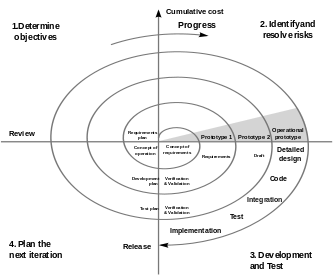
The spiral model allows teams to take multiple SDLC methodologies on the risk pattern of the given project. When the team chooses the iterative and waterfall model, they have to face the challenges of knowing when it is the right time to move to the next phase.
Organizations that are not sure about their requirements or modifications during their risk analysis can go with this methodology. This is the most flexible approach. In this SDLC model, the project passes through the following 4 phases, allowing for multiple rounds of refinement:
- Determine Objectives
- Identify and Resolve Risks
- Development and Test
- Plan the next Iteration
Risk management is another benefit of the spiral SDLC approach. This is typically used by large organizations.
Pros
The following are the remarkable benefits of the spiral model:
- As the spiral model is the risk-driven software development approach, it enables you to analyze and handle risks in the software product at every phase of development.
- It is ideal for large and complex projects.
- This model allows the changes in the requirements at the later stages of development.
- End-users can see the software product at the early stages and not have to wait till the end of the development life cycle.
Cons
Here are the significant downsides of the spiral methodology :
- The spiral model is more complex than other software development models.
- It is expensive and hence, not suitable for small and simple projects.
- The number of phases involved in this model is unknown at the onset of development. Therefore, it is challenging to estimate the required to develop the software product using this model.
7. DevOps Model
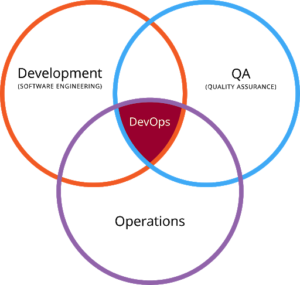
DevOps is the latest methodology in the SDLC methodologies. As suggested by the name, it aims at uniting development and operations. Now, this method is adopted by many software companies and IT organizations.
As the name specifies, the purpose of this model is to bring the development teams together with the operational for streamlined delivery and support. The advantage of using this model is that the organizational risk is reduced, and changes become more fluid.
Amazon Web Services says about DevOps methodology: “ DevOps is the combination of cultural philosophies, practices, and tools that increase an organization’s ability to deliver applications and services at high velocity: evolving and improving products at a faster pace than organizations using traditional software development and infrastructure management processes.”
Pros
Some significant advantages of DevOps are listed below:
- The DevOps methodology delivers fully-functional software products within a short time period.
- It ensures better workflow management. Both the development and operations teams work together.
- The constant collaboration between cross-functional teams in DevOps ensures quick bug fixes at any stage of the development cycle.
- Applications developed using DevOps are more scalable and reliable due to the use of microservices and cloud technologies.
Cons
Here are the downsides of the DevOps methodology:
- The DevOps methodology requires skilled and experienced professionals, which are very hard to find.
- This methodology involves a massive investment of both time and money.
8. V-model Model
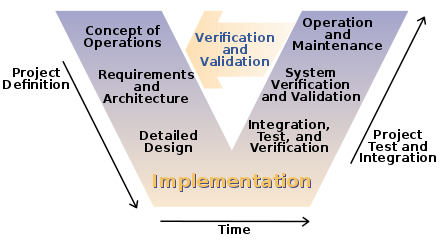
The transformation or evolution in the classic waterfall model came out in the form of the V-model. The difference is that the testing phase is associated with each development stage of the V-model. It is known as the Verification and the Validation model also.
In this model, the process happens in a sequential manner that follows a V-shape. In the V-model, the testing phase is planned in parallel. Therefore, the verification phase is on one side of the ‘V,’ and the validation phase is on the other side of ‘V’.
The advantage of this model is that it is a highly disciplined model and very effective for smaller projects where requirements are very well understood.
Pros
Here are the upsides of the V-model:
- The V-model is simple and easy to interpret.
- It is a highly disciplined model. Also, the next phase of the development begins only when the current phase completes.
- If you have clear and concise requirements for the software product, choosing the V-model would be a great move.
- You can easily manage the software development process using this model since each phase has specific deliverables and a review process.
Cons
Some significant downsides of the V-model are as follows:
- It involves high risk and uncertainty.
- It is not ideal for complex and large projects having unclear requirements.
- When your project has a risk of changing requirements, choosing the V-model is not a good option.
- The fully-functional software is available only at the end of the development life cycle.
9. Rapid Application Development (RAD) Model
Rapid application development , also known as rapid application building, is yet another popular software development approach that emphasizes the adaptive process. It primarily focuses on prioritizing prototypes and releases of the software product.
Unlike the waterfall model, the RAD method primarily focuses on the use of software and user feedback over strict planning and requirements recording. The functional modules are developed in parallel, and later, they are integrated to form a complete software product. This ensures faster delivery.
Also, RAD does not involve preplanning, and hence, incorporating changes to the requirements is quite easy. However, the prototypes developed in this methodology should be reusable.
Pros
Some major benefits of the RAD methodology are as follows:
- It allows changes to the requirements throughout the development process.
- Using the robust RAD tools, you can reduce the iteration time, ensuring the fast delivery of software products.
- This approach ensures productivity with a few members in a short time.
- The prototypes developed are reusable.
- It entertains customer feedback.
Cons
The following are some of the significant drawbacks of RAD:
- This approach requires highly skilled developers.
- All the team members should be technically sound to identify business requirements.
- Since it is expensive, RAD is not ideal for cheaper and simple projects.
- It involves high management complexity.
Choosing the Best SDLC Methodologies
When you choose among the best SDLC Methodologies for your organization, it is important to remember that one solution may not fit in every scenario. So there are a few things to do while you make the pick between the SDLC methodologies options you have:
- Consider discussing with an expert IT analyst.
- Underline your business requirements. Why do you need the product? How do you want it to work? What resources do you already have? And so on.
- Do proper research.
Conclusion
That concludes our take on the top SDLC methodologies that you can use to champion your software development endeavors. Remember, different SDLC methodologies are simply different approaches to the same thing, i.e., the process of developing a software product. The only difference lies in terms of the priorities and the preferred approach.
So, choose wisely! All the best.
People are also reading:
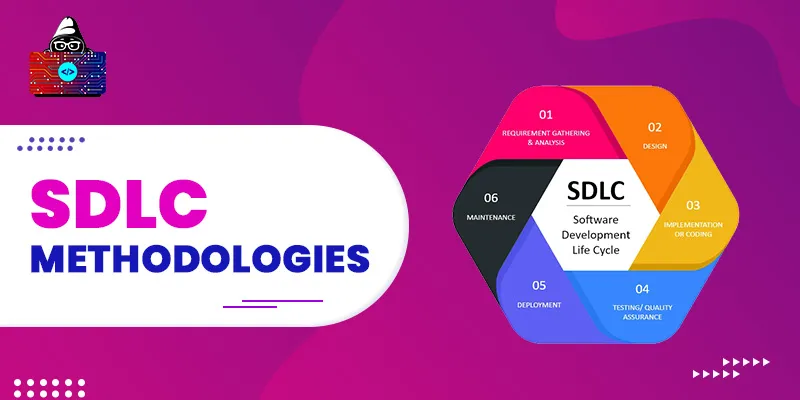

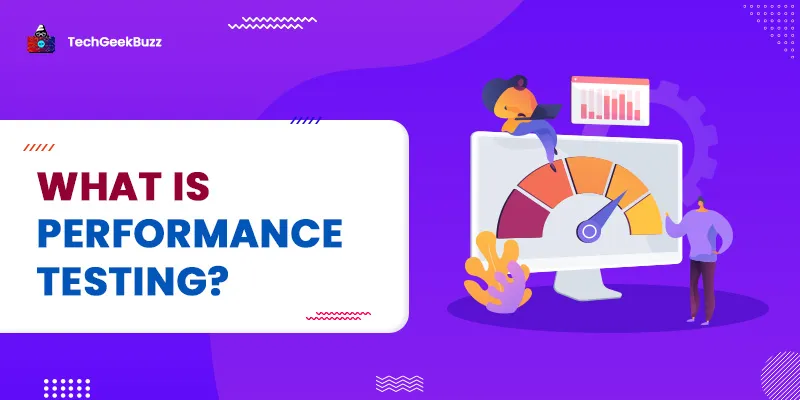
![What is Waterfall Model? [Phases, Pros, & Cons]](/media/new_post_images/Waterfall_Model.webp)
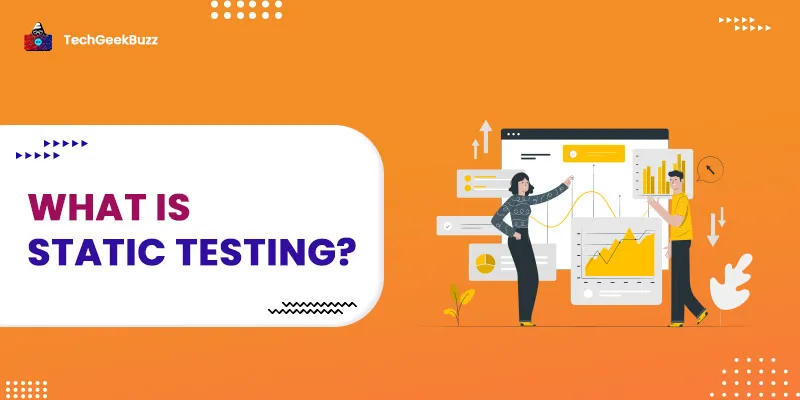
Leave a Comment on this Post